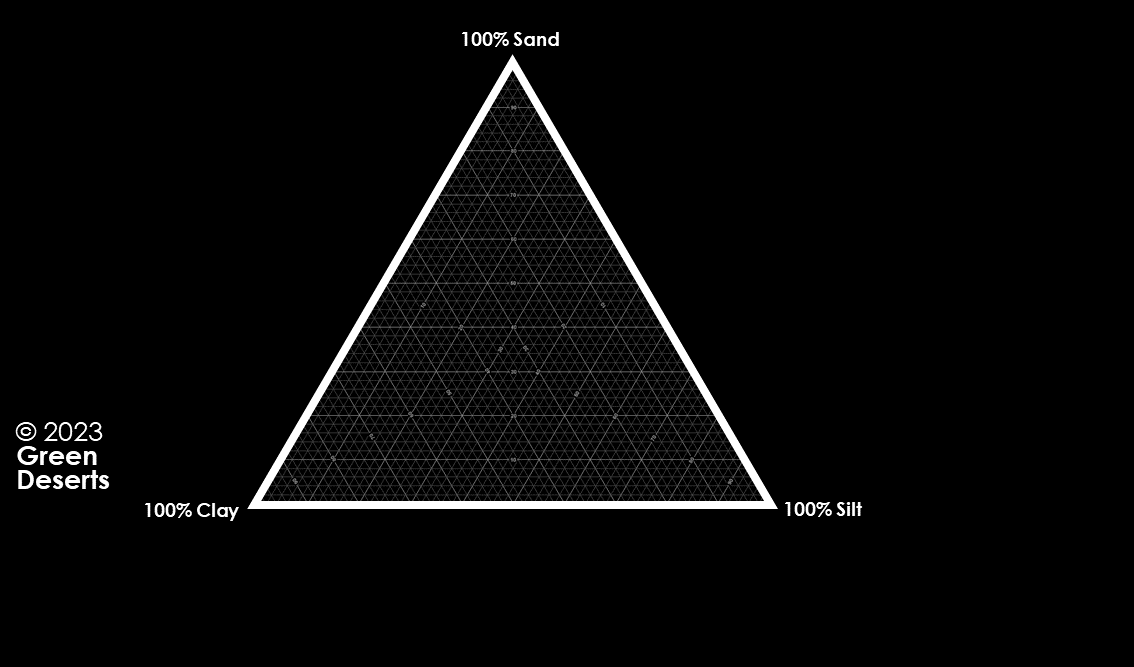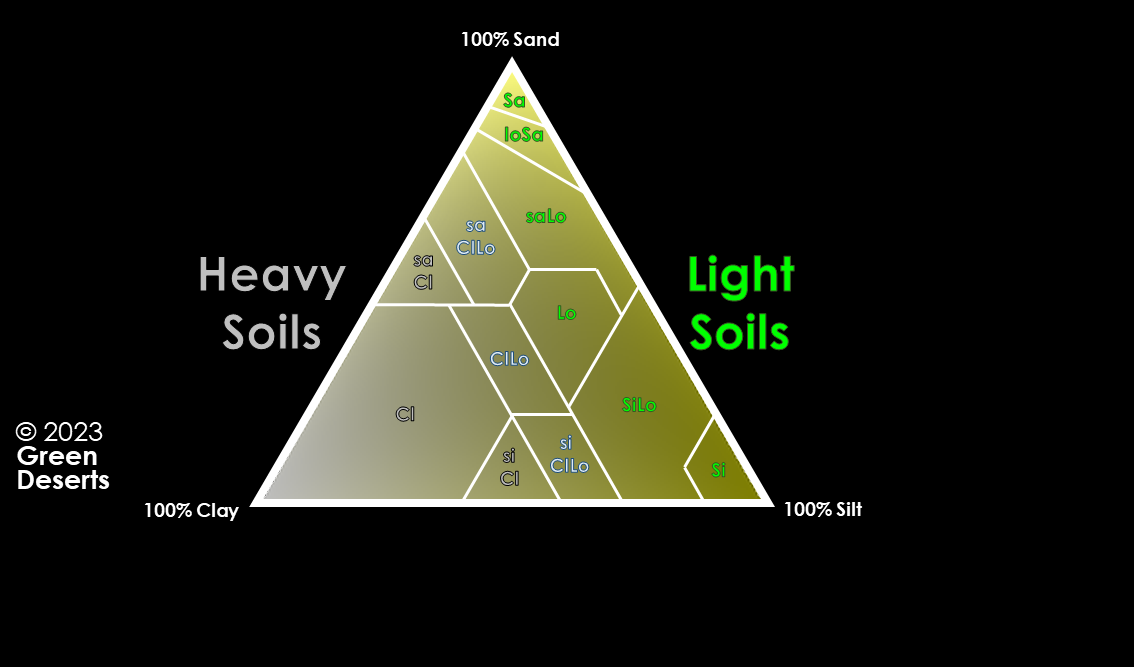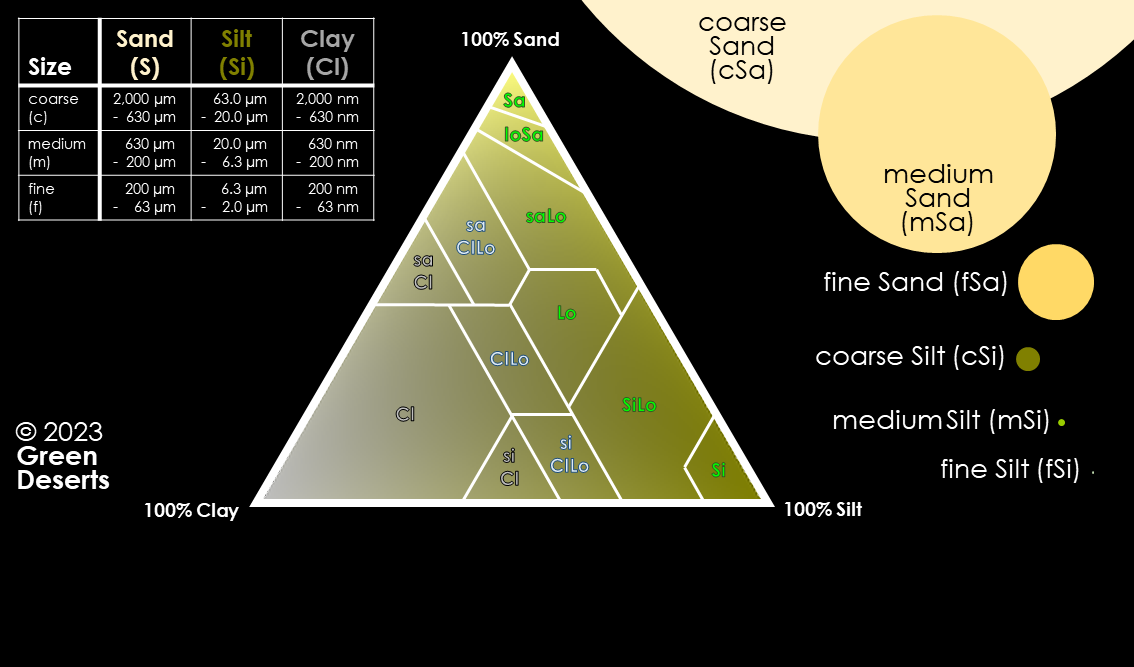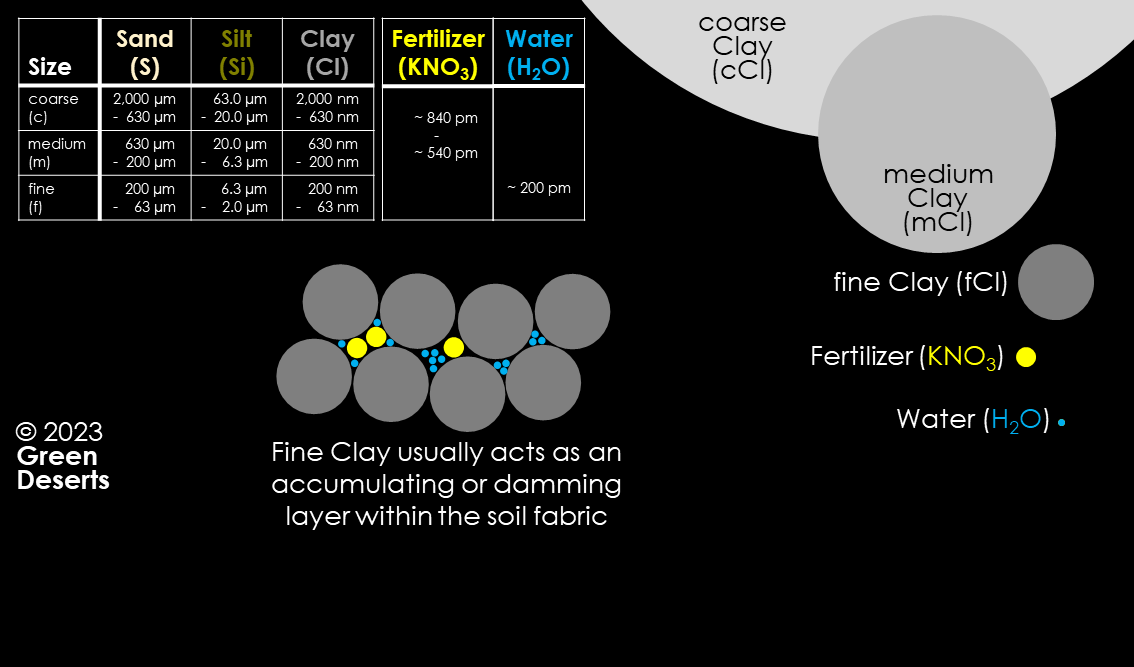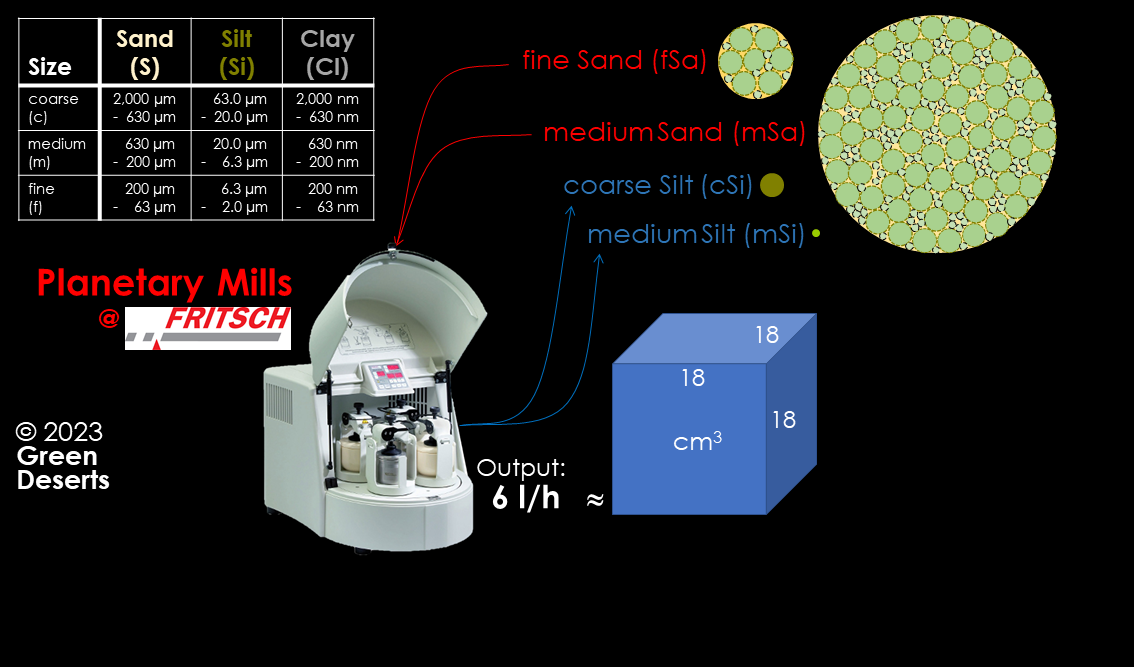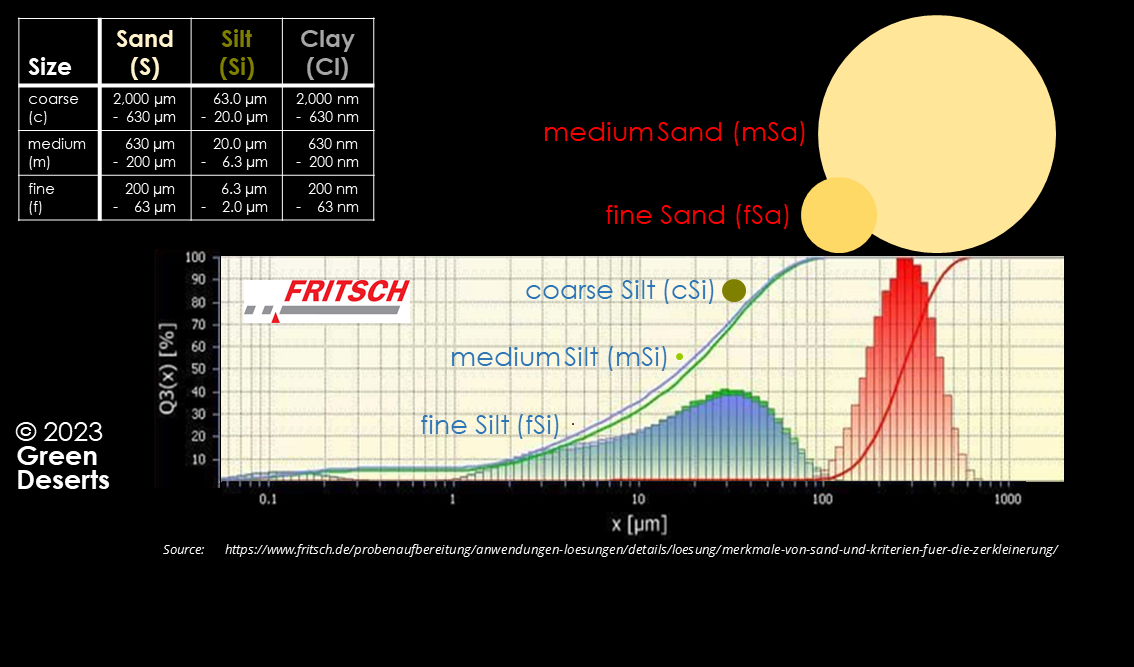Soils are characterised by a sequence of layers, and each layer is described by its composition of sand, silt, and clay.
Sand, silt, and clay are silicon oxides altogether. Sand and silt are silicon dioxides whereas clay is a silicon tetroxide. Thus, sand, silt, and clay differ in their particle sizes in the first place.
Sand grains have a size of 63 – 2,000 µm, whereas silt particles have a size between 2 µm and 63 µm. Clay particles have a size between 63 nm and 2,000 nm, or 2 µm, respectively. Thus, the average sand grain is about 30 times bigger than a silt particle, and a silt particle itself is in average about 30 times bigger than a clay particle.
If we take a sand grain and shatter it into pieces one thirtieth of its original size, then we have turned sand into silt. If we could do the same with silt, we would have turned silt into clay.
Luckily, there are special tools available that can do this job, called planetary mills.
